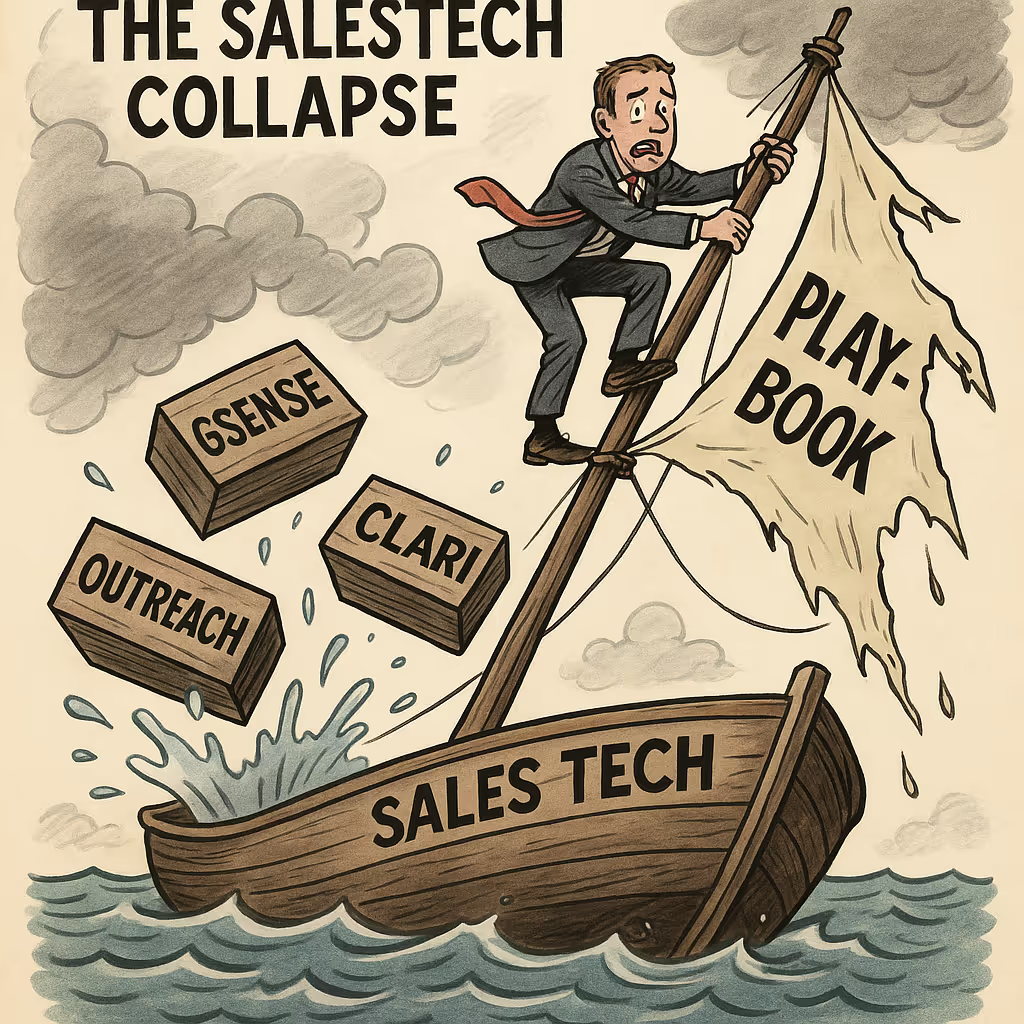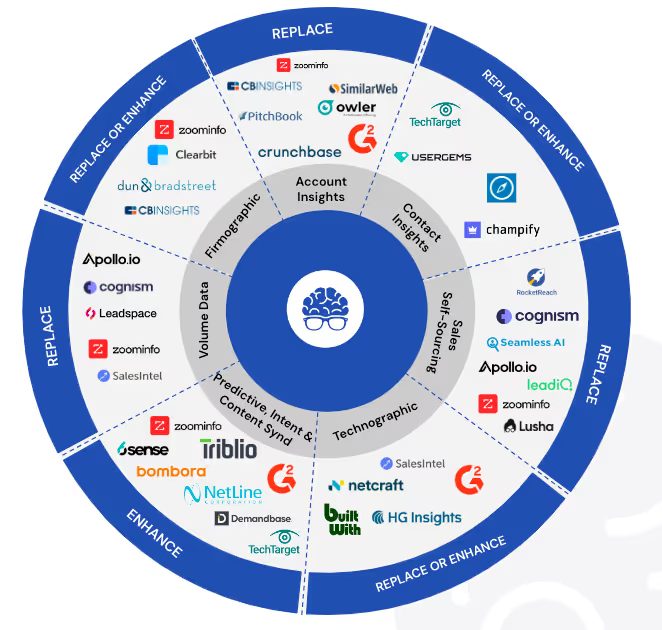The unraveling of salestech isn’t just about a few tools going stale. It’s a parable for the larger story of software and capital.
For more than a decade, salestech embodied the promise of SaaS hypergrowth. The model was straightforward: raise vast sums of venture capital, build out a tool that promised to expand pipelines, arm armies of junior BDRs with dashboards and dials, and scale through brute force. The dream wasn’t just growth — it was inevitability. Outreach was supposed to be Salesforce for engagement. 6Sense, the indispensable eye into intent. Clari, the operating system for forecasting. They weren’t just products, they were supposed to be categories.
But categories age. And playbooks wear thin.
Over the past 24 months, the shine has dulled. 6Sense’s leadership shakeup was the canary. Clari’s merger with Salesloft showed even pioneers saw no viable path forward alone. Outreach, once breathlessly hyped, now feels like an echo of a different era. What’s happening here isn’t just operational turbulence. It’s a structural shift in how capital, technology, and demand collide.
The Capital Cycle Turns
The first thing to notice is that this collapse coincides with a capital reset. The salestech boom was born in a zero-interest-rate world. Capital was cheap, and the mandate from investors was simple: grow. Stack tools on top of tools, acquire logos, chase TAM with abandon. The job of founders wasn’t to build sustainable economics, it was to capture narrative momentum — to make the next round bigger than the last.
But the Fed raised rates. The capital environment tightened. And suddenly, line items that looked like growth engines became costs to be cut. A $100,000 tool that promised efficiency was easy to defend when money was free. When it wasn’t, finance leaders began sharpening their pencils.
This isn’t just about sales software. We’re seeing the same reckoning across SaaS. Valuations in vertical SaaS, DevOps, and marketing automation have all contracted. “Hypergrowth” has been replaced by “margin discipline.” Growth-at-all-costs has given way to survival-at-all-costs.
The Technology Cycle Shifts
The second change is technological. The moat that once protected salestech incumbents — proprietary data models, proprietary workflows, algorithmic insights — has evaporated. AI has collapsed feature timelines from years to months. What once required 50 engineers can now be prototyped by five. That makes defensibility fragile. And when defensibility collapses, so do valuations.
Bundling is the predictable defensive move. Gong folds forecasting into engagement. Clari and Salesloft merge to tell a story about orchestration. But bundling is expensive. It introduces integration pain, product complexity, and technical debt. And it doesn’t stop the next startup from out-executing a single wedge of the problem with more focus and less overhead.
The Demand Cycle Breaks
The third change is demand itself. The playbook of the early 2010s — more BDRs, more tools, more dials — simply doesn’t work anymore. Buyers are exhausted. Inboxes are saturated. Spam cannons are tuned out. Inbound, once hyped as the great salvation, has proven finite. The reality is that there’s not enough organic demand to feed the ambitions of hundreds of sales software companies.
And so the tools designed to help companies sell are themselves unsellable. It’s a logic trap: churn rises, adoption falls, and even the companies building the stack are caught in the same structural problem their customers face.
What It Means for SaaS and Beyond
If you zoom out, what we’re seeing in salestech is a microcosm of what’s hitting SaaS at large. The era of “winner-take-all platforms” built on cheap money and loose adoption curves is ending. What replaces it will be smaller, sharper, and more defensible.
In capital markets, this means fewer unassailable winners. It means a proliferation of SaaS zombies — companies too well-capitalized to die but too poorly differentiated to grow. It means consolidation will intensify, not out of synergy, but out of necessity. And it means investors, boards, and buyers alike will demand unmistakable ROI — measured in months, not years.
The salestech collapse isn’t just about a few companies stumbling. It’s the end of an era. The playbook that promised infinite expansion has hit the limits of human attention, technological defensibility, and capital patience.
The survivors won’t be the companies that promise to own the stack. They’ll be the ones that make themselves unavoidable in a single, vital workflow. They’ll be embedded, not adjacent. They’ll measure their moats in signals that can’t be cloned, not features that can be copied.
Salestech isn’t dying because it failed. It’s dying because it matured — and the conditions that birthed it are gone. The next generation of winners won’t be bigger tools. They’ll be smarter ones. And their rise will tell us as much about the future of capital as it will about the future of sales.




